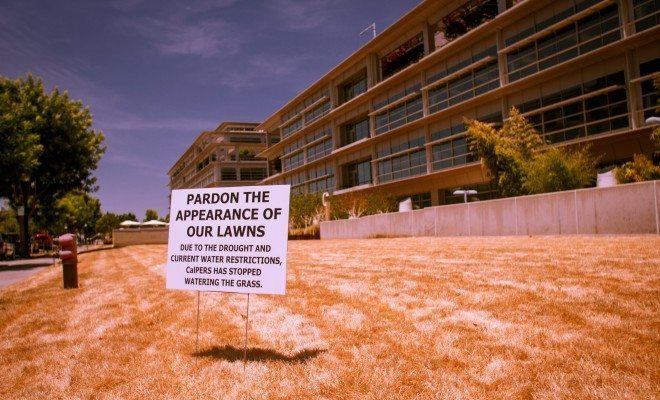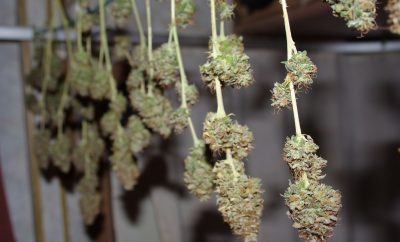 Image courtesy of [Kevin Cortopassi via Flickr]
Image courtesy of [Kevin Cortopassi via Flickr]
Energy & Environment
California’s Drought: Costs and Consequences
California is in the midst of one of the worst droughts we’ve ever seen. The demand for water is exceeding the actual supply of water in the region, leading to big problems. The Southwest region of the United States has always been a dry area, and previously most Southwestern states nursed from the same water supply. Due to a decline in the water supply, those same procedures will not work in 2015 and beyond. Read on to learn about the changing policies for California relating to its water supply, and the potential effects of California’s drought.
Colorado River Sources
In order to understand the water problems occurring in California and the American Southwest as a whole, it’s important to understand the overall state of water in the region. The Colorado River and other water sources in the area play an important role, both historically and today.
According to the Glen Canyon Institute, here’s the background of the area: Seven states in the Colorado Basin signed the Colorado River Compact in 1922. The agreement allocated water rights between New Mexico, Nevada, Utah, Wyoming, Colorado, Arizona, and California.
But now the Colorado River Basin is experiencing a natural disaster and water supply tragedy. That agreement almost 100 years ago was reached based on an overestimation of river flow, and an underestimation of water demand. As a result of the growing demand and unyielding drought, there is a water deficit of almost 1 million acre-feet a year in the Colorado River system.
To provide water for over 40 million people, the Hoover and Glen Canyon dams were built as a part of the Colorado River water management system under the 1922 agreement. This created the Lake Mead and Lake Powell reservoirs. But now, both the Lake Powell and Lake Mead reservoirs are half empty. Environmentalists doubt the reservoirs will ever naturally fill again.
As a result, the conservation and fate of the Colorado River system is directly linked to the environmental health of the Southwest.
How did this problem begin?
During the last century, more than a dozen dams were built which negatively affected the flow of the Colorado River, as a result, “hundreds of miles of canyon and countless archaeological sites have been flooded, and dozens of wildlife species have been endangered.” Glen Canyon Dam is one of the largest contributors to these issues.
The Grand Canyon Protection Act of 1992 was meant to alleviate the negative effects the Glen Canyon Dam had caused; specifically to, “protect, mitigate adverse impacts to, and improve the values for which Grand Canyon National Park and Glen Canyon National Recreation Area were established.” Despite the fact that this act was passed 23 years ago, little implementation or success has been seen.
Lake Mead & Lake Powell
In Lake Mead, water levels have dropped to 1,085 feet above sea level, the lowest in 75 years, and only 10 feet above the level that would trigger cuts in water deliveries by the federal government to Arizona and Nevada.
The purpose of building the dams was to keep the lake reservoirs full. Some strategize to “Fill Lake Mead First” arguing it would benefit the people who depend on Lake Mead in major cities like Los Angeles and Las Vegas. However, this strategy appears to be largely going unnoticed by policymakers.
California Water Policies
It was only in 2014 that the California government began to recognize the severity of the drought and began to enact serious policy changes. Governor Jerry Brown and California Democratic lawmakers “enlisted business support of a $7.2 billion plan composed mostly of new bonds for water storage and delivery to drought-stricken cities and farms.”
California Governor Jerry Brown signed three bills designed to regulate the pumping of water from underground aquifers. An aquifer is an underground layer of materials such as sand, silt or gravel from which groundwater can pumped up. Habitual digging for water has led to sinking–nearly 30 feet in some areas. Previously, aquifers provided 30-40 percent of California’s water supply. Since the drought, nearly 60 percent of the state’s water comes from underground. Scientists worry that it is possible to completely deplete the underground supply. Currently, there is no method to replace the underground water. In addition, a lack of underground water affects the species of animals who depend upon it. Without a diverse ecosystem underground, the quality of the dirt is also weakened over time.
Governor Brown first politely asked Californians to reduce their water consumption by 20 percent, but instead consumption rose. A water board survey of 267 water providers found consumption in the Bay Area dropped five percent. But in coastal California, consumption rose eight percent, leading to an overall one percent increase of water usage statewide.
As a result, Governor Brown ordered mandatory water use reductions –the first time such an action has been taken in California’s history. An executive order directed the State Water Resources Control Board to enforce a “25 percent reduction on the state’s 400 local water supply agencies, which serve 90 percent of California residents.” However, owners of large farms, who obtain their water from sources outside the local water agencies, will not be subject to the 25 percent mandate.
The agencies are responsible for creating ways to monitor compliance and enforce restrictions to cut back on water use; some hypothesize there should be fines from $500-$1000 per violation.
The federal government has made a contingency plan as well. According to Nova Publishers, the U.S. Department of Agriculture offers programs to help farmers nationwide “recover financially from a natural disaster, including federal crop insurance, the Noninsured Crop Disaster Assistance Program (NAP), and emergency disaster loans.” These loans are typically less than $100 million per year.
Although state officials do not expect the executive order to result in an increase in farm or food prices; these assumptions can only apply to the immediate future. Long-term effects are still unforeseen.
What are the consequences of California’s water shortage?
Environment
While the entire Southwest region of the United States is facing challenges, California is seeing the most the extreme. Combined with extreme heat, and less circulation, the lack of rainfall has triggered a dangerous increase in wildfires and air pollution across the state. The smog is sticking around due to high-pressure systems, setting California back decades in terms of clean air and creating new health risks.
Jobs
A University of California-Davis research report estimated there would a direct cost to agricultural industry totaling $1.5 billion, a statewide economic cost of $2.2 billion and the loss of 17,100 jobs related to agriculture–rendering a 3.8 percent farm unemployment rate.
Prices
Observers are divided on whether California’s drought will make food prices rice. It seems logical that as farm acres become less useful, food would be more difficult to produce, thus making popular crops like tomatoes, artichokes, and broccoli more expensive.
The most affected crops will most likely be be rice, cotton, hay and corn silage. But crops like avocado, and mangoes which are mostly imported shouldn’t be affected.
Some retailers believe one of California’s signature products, wine, will see price increases in the coming months. The scarcity of water will likely increase prices for wines, especially some of the cheaper ones.
The U.S. is a geographically diverse nation, and does not solely depend on the Southwest for food production. For now, the globalization of food along with the nation’s agriculture industry has helped American consumers mostly escape higher food prices. These two factors continue to work to limit impacts on total food production and costs.
Why doesn’t Silicon Valley help?
What about reverse osmosis? Recycling water? All of those other terms we learned in biology? Technology should be able to solve this problem right? Well some efforts have begun.
California has started the Water Recycling Funding Program (WRFP) to promote the beneficial use of water recycling in order to add to fresh water supplies in California. State funding is going towards water treatment facilities, while most of private and outside funding is going towards the tech community innovations.
Or take Tech startup TerrAvion. According to CNBC it “flies manned aircraft over farmland and gives growers thermal images that can show farmers potential trouble spots when it comes to irrigation” and give tips on how to manage water more effectively.
WaterSmart Software works with water utilities to supply easy-to-understand information to customers on their water use–for example, showing how much water their home may be using compared to another home of the same size.
Conclusion
According to National Geographic, “for many years, California’s powerful agricultural lobby resisted any and all legislative attempts to regulate water restrictions, or groundwater withdrawals.” But, the extent of the current drought, combined with the state’s increasing demand for water has led to new support for change. We are in a new era and California may actually start to look like a desert. Even with the 25 percent reduction push, and the possibility of tech companies saving the day, Californians still must make behavioral changes to reduce water consumption. Even if Californians do make these changes, saving 25 percent of the water supply is not a long-term solution. It’s time for real change in California.
Resources
Popular Mechanics: 6 Radical Solutions for U.S. Southwest Peak Water Problem
National Geographic: Record Drought Reveals Stunning Changes Along Colorado River
Stanford: Causes of California Drought Linked to Climate Change, Stanford scientists Say
National Geographic: Amid Drought, New California Law Will Limit Groundwater Pumping
New York Times: California Imposes First Mandatory Water Restrictions to Deal With Drought
Arizona Central: States Expected to Reduce Water Taken from Lake Mead
CNBC: Silicon Valley Seeks to Help California
Fortune: The Consequences of California’s Severe Drought
Mercury News: California Drought Conservation Efforts Failing
KTLA: Heat, Drought Causes Significant Increase of Wildfires
LA Times: Heat, Drought Worsen Smog in California, Stalling Decades of Progress
Editor’s Note: This post has been updated to credit select information to The Glen Canyon Institute and National Geographic.








Comments